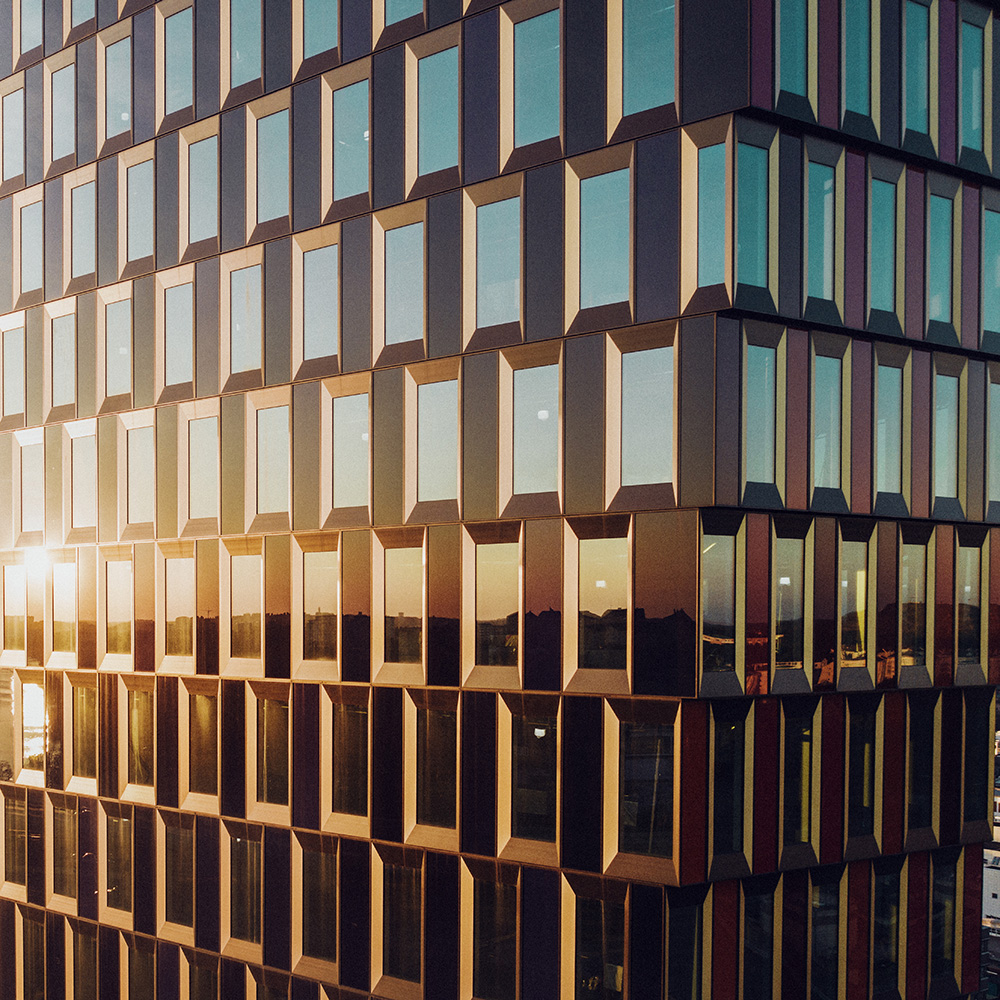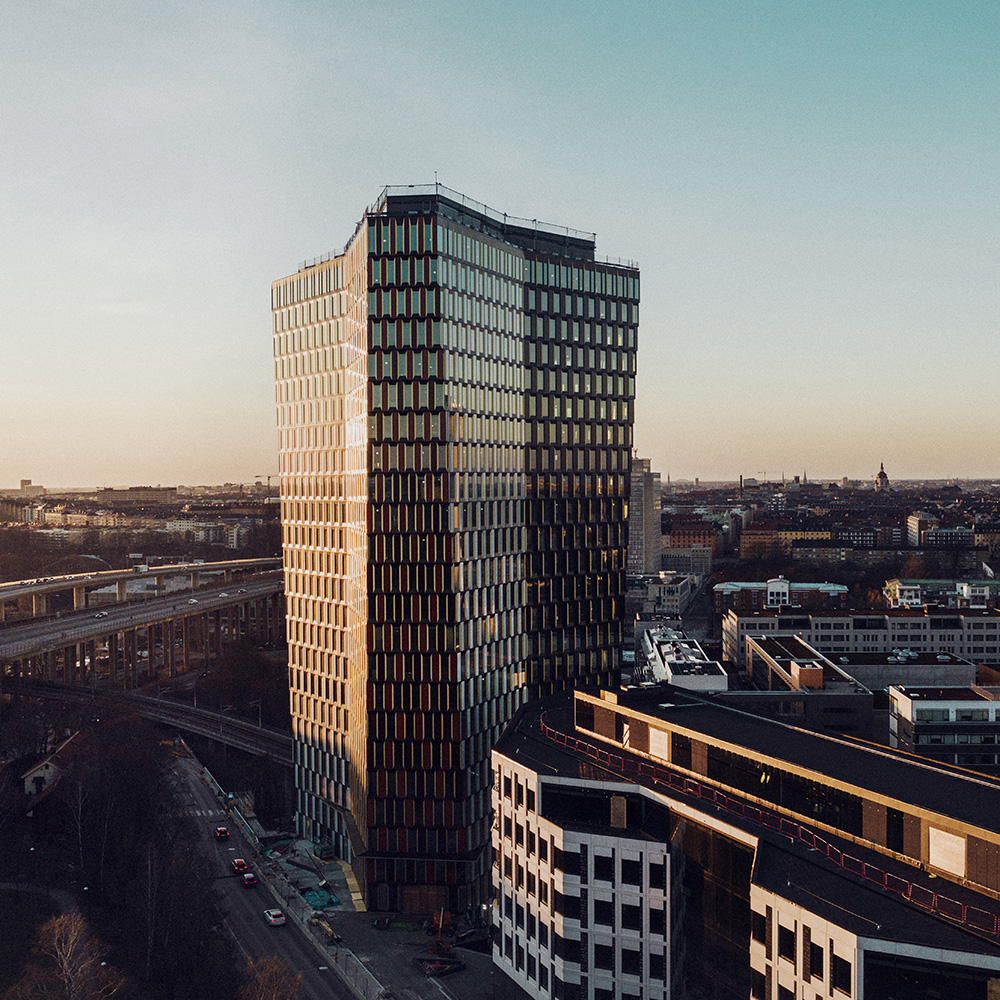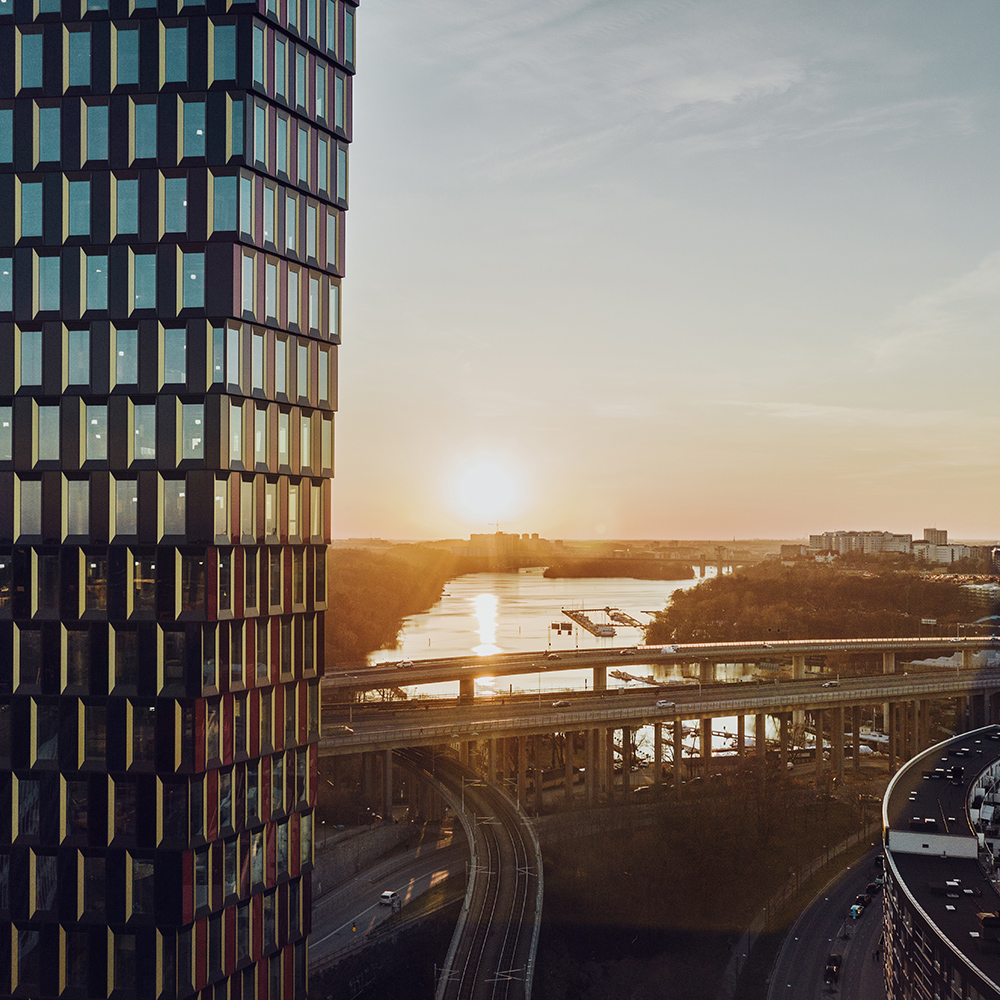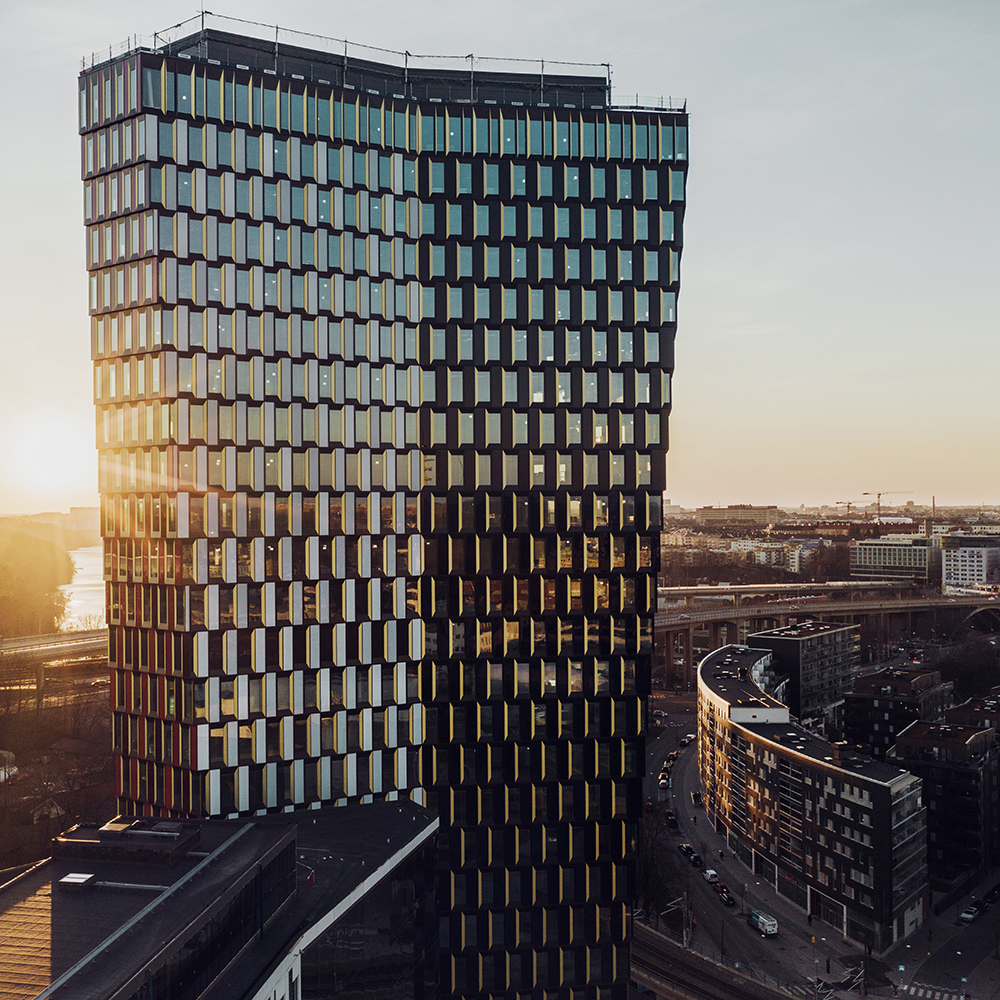Sthlm New in Hammarby Sjöstad
A creative working life
Sustainable initiatives, working methods and solutions are a focal point in the planning, implementation, and use of the Sthlm New buildings. A total of seven buildings, one of which, Sthlm 01, will be a towering 27 storeys and 102 metres high – a sassy new landmark for the entire capital.
Skanska’s urban development project, Sthlm New, aims to create a welcoming, attractive place for innovative companies south of the bridge over the Hammarby Canal. Here – in a former industrial port – seven new buildings are being erected. Each house has its own character, and one of them, Sthlm 01, will be a towering 27 storeys and 102 metres high – a sassy new landmark for the entire capital. Just over 400 homes, shops, cafés, restaurants and bars have been established in the area. A number of Stockholm’s innovative companies and organisations have already moved their operations to Hammarby Sjöstad. Here they can work in an inspiring atmosphere. When the area is ready, there will be about 8 – 10,000 jobs in the district. Sustainable initiatives, working methods and solutions are a focal point in the planning, implementation, and use of the buildings:
-
Sustainability issues in the production of the buildings are managed through Skanska’s own eco-labelling system, which imposes ambitious environmental standards that go beyond the current legal requirements and requires that the workplace meets a number of important environmental criteria
-
Minimisation of material transports and reuse of excavated earth and rubble from nearby projects
-
Environmental certification of all completed buildings according to the internationally recognised LEED certification system
-
Most of the buildings are supplied with solar energy from an off-site solution outside the electricity certificate market
-
Smart parking solutions with shared use and a high proportion of charging stations
-
With entrances directly from the street, spacious bicycle garages equipped with showers, changing rooms and workshop facilities promote cycling to work and everyday exercise
-
Collaboration with creative school classes and professional artists has generated several art initiatives in the area, increasing the everyday well-being of those who live, pass through or work in the district
-
The Tvärbanan light rail runs straight through the area, and in 2030 a new entrance to the Gullmallsplan metro station is expected to open on the ground floor of one of the new buildings. With the new Blue Line, the travel time to T-Centralen has been cut by more than half.









